From its roots in the early 20th century, the jazz piano has been a pivotal force in the genre’s evolution, mirroring jazz’s own transformation from ragtime to the avant-garde. Artists like Art Tatum, Thelonious Monk, and Bill Evans didn’t just play; they revolutionized, using the piano to explore uncharted musical territories.
This list of “20 Best Jazz Pianists” was curated based on innovation, influence, virtuosity, and their indelible impact on jazz. It’s a journey through the history of jazz itself, highlighting those who have shaped its sound and spirit.
When we look at the lives of famous jazz pianists, we learn about the different styles of jazz music. There’s bebop, which is really complex, and modal jazz, which makes you think deeply. There’s also fusion jazz, which mixes different kinds of music together. These pianists show us how jazz music can change and grow because of creative people working together.
In this big world of jazz, we can find some of the Best Jazz Ballads. These are special songs that touch your heart and make you feel a lot. They show us how jazz can be really emotional and beautiful. Also, when we talk about how jazz music has changed over time, we can’t forget about the Best Cool Jazz Albums. This style of jazz is more laid-back and makes you think. It’s a different way of playing jazz that a lot of people like.
The Pioneers
This part highlights Art Tatum, Thelonious Monk, and Bud Powell. These three legends hold significant importance in the world of jazz piano, with each bringing their own unique flair. Tatum dazzled audiences with his incredible speed and skill on the piano, establishing himself as a virtuoso. Monk was renowned for his ability to create new, catchy tunes that pushed the boundaries of jazz. Powell specialized in bebop, a lively and complex type of jazz music, contributing to its popularity and evolution.
Together, they were instrumental in laying the groundwork for various types of jazz music, pioneering innovative styles that have influenced countless musicians. Their efforts have been crucial in the evolution of jazz, enriching the genre with diverse and dynamic sounds.
1. Art Tatum
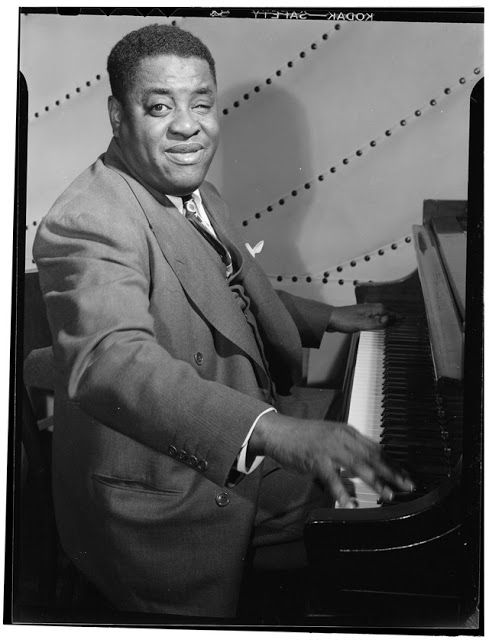
Art Tatum, born in Toledo, Ohio, on October 13, 1909, remains a towering figure in the realm of jazz piano, celebrated for his revolutionary approach to the instrument. Despite facing significant challenges, including severe vision impairment from a young age, Tatum’s prodigious talent for music shone through. He was largely self-taught, drawing inspiration from church music and the vibrant jazz scene of his time, particularly influenced by the likes of Fats Waller and James P. Johnson. His early years were marked by local performances and radio appearances, setting the stage for his move to New York City
Tatum’s style was characterized by an unparalleled technical mastery, blending elements of stride, ragtime, swing, and classical music. His performances showcased his ability to produce orchestral textures solo, with lightning-fast arpeggios, complex harmonies, and intricate embellishments. Notably, his improvisational skills were marked by the spontaneous introduction of new chord progressions, enriching the jazz piano repertoire and setting new standards for pianists.
Among his notable tracks, “Tea for Two” and “Tiger Rag” stand out as quintessential examples of his virtuosity and innovative approach to jazz piano. These recordings not only highlight Tatum’s ability to reinterpret standards with his unique style but also continue to inspire and astonish listeners with their breathtaking musicality and technical brilliance.
Despite personal struggles, including battles with alcoholism, Tatum’s influence on jazz and subsequent generations of musicians cannot be overstated. His work laid the groundwork for modern jazz piano, inspiring legends such as Charlie Parker, Oscar Peterson, and Herbie Hancock. Tatum’s recordings, including solo works and collaborations, continue to be celebrated for their innovative approach and sheer brilliance, securing his legacy as one of the greatest virtuosos in jazz history.
2. Thelenious Monk
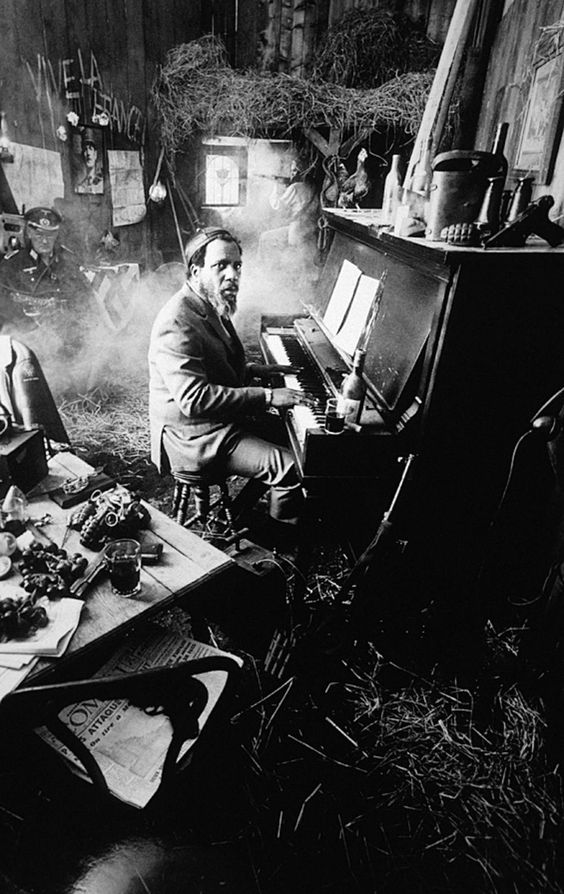
Thelonious Monk, a pioneer of the bebop movement in jazz, is celebrated for his distinctive approach to jazz piano, characterized by innovative dissonances, angular melodic twists, and a highly percussive attack. Born on October 10, 1917, in Rocky Mount, North Carolina, Monk’s journey into jazz began early, influenced by his stride piano lessons and the vibrant musical environment of New York City, where he moved with his family at a young age. His unique style was honed at Minton’s Playhouse in the 1940s, a venue that became a crucible for the development of bebop, where Monk’s contributions were instrumental alongside other jazz luminaries.
Monk’s compositions, such as the iconic “‘Round Midnight” and “Blue Monk,” are integral to the jazz repertoire, showcasing his ability to blend complexity with a deep emotional resonance. His performances were not just auditory but also visual, with his idiosyncratic dances during performances adding to his legend. Despite challenges, including a period when he lost his New York City Cabaret Card, Monk’s artistry never wavered, earning him a spot on the cover of Time magazine, a rare honor for jazz musicians.
Monk’s influence on jazz is profound, with his pioneering work laying the groundwork for future generations. His recordings continue to inspire musicians and listeners alike, offering a window into the innovative spirit of one of jazz’s greatest figures. Monk’s legacy is a testament to his genius, creativity, and the enduring power of his music.
3. Bud Powell
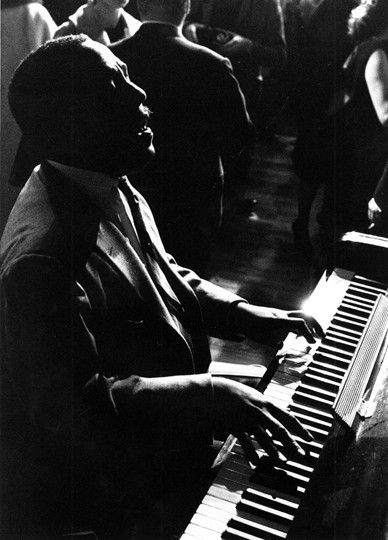
Bud Powell, born on September 27, 1924, in Harlem, New York, stands as a monumental figure in the history of jazz, particularly bebop. He is celebrated as the first pianist to introduce intricate, improvised solos, transforming the role of the piano in jazz ensembles and influencing generations of musicians. His musical journey began early, showing a keen interest in swing music by the age of ten and making his public debut at a rent party, mimicking Fats Waller’s style. Despite facing significant personal and health challenges, including a severe head injury and subsequent mental health issues, Powell’s contributions to jazz remained groundbreaking.
Powell’s career took off in the mid-1940s, where his performances at Harlem clubs, notably Minton’s Playhouse, placed him at the heart of the bebop movement alongside giants like Charlie Parker and Dizzy Gillespie. His playing style, characterized by rapid right-hand lines and reduced left-hand chords, set new standards for jazz piano. Despite his struggles, Powell’s influence on jazz was profound, with compositions like “Bouncing with Bud” and “Dance of the Infidels” becoming staples in the bebop repertoire.
Powell spent his later years in Paris, where his health briefly improved, allowing him to continue performing and recording. Unfortunately, his return to New York in 1964 was short-lived due to the resurgence of past traumas, and he passed away on July 31, 1966. His funeral in Harlem was a testament to his impact, drawing thousands of mourners. Powell’s innovative techniques and compositions have left an indelible mark on jazz, cementing his legacy as a pioneering genius of the bebop era.
The Innovators: Revolutionizing Jazz Piano
This section shines a light on the trailblazers who redefined jazz piano, each bringing a unique innovation to the genre. From Bill Evans’ introspective modal jazz and lyrical play to Herbie Hancock’s fusion of electronic elements with jazz, McCoy Tyner’s pioneering quartal harmony in collaboration with John Coltrane, to Keith Jarrett’s unparalleled improvisational skills across diverse jazz styles. These artists not only expanded the vocabulary of jazz piano but also influenced countless musicians and reshaped the landscape of jazz itself.
4. Bill Evans
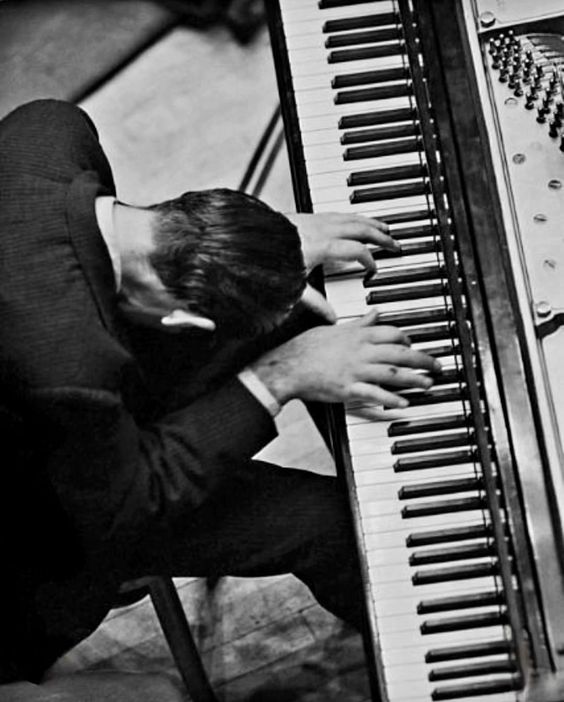
Bill Evans, born on August 16, 1929, in Plainfield, New Jersey, and passing on September 15, 1980, in New York, New York, is heralded as one of jazz’s most influential pianists, known for his lush harmonies and lyrical improvisation. His music education began with his mother and expanded into classical training at Southeastern Louisiana College. Moving to New York City in the mid-1950s, Evans quickly integrated into the jazz scene, making significant contributions to the genre.
Evans’s collaboration with Miles Davis on “Kind of Blue” marks a pinnacle in jazz history, showcasing modal jazz—a style favoring melody over complex chords. His composition “Blue in Green” from this album, alongside “Waltz for Debby,” are among his most celebrated works. Notably, his trio, including Scott LaFaro and Paul Motian, was lauded for its innovative interplay, particularly evident in albums like “Portrait in Jazz” and “Explorations.”
Evans’s harmonic language, deeply influenced by impressionist composers like Debussy and Ravel, introduced new chord voicings and reharmonizations to jazz piano, leaving a legacy of innovation. His approach often featured added note chords, modal inflections, and unconventional substitutions, significantly impacting the harmonic framework of jazz piano. Evans’s style emphasized motivic development, both melodically and rhythmically, employing techniques such as rhythmic displacement and melodic sequencing that have become benchmarks in jazz improvisation.
Despite personal struggles, including a battle with drug addiction and the tragic loss of his brother Harry, Evans’s music remained profoundly expressive until his last recordings, such as “We Will Meet Again,” for which he posthumously won a Grammy. His influence resonates in the work of countless jazz musicians and remains a foundational pillar in the study and performance of jazz piano
5. Herbie Hancock
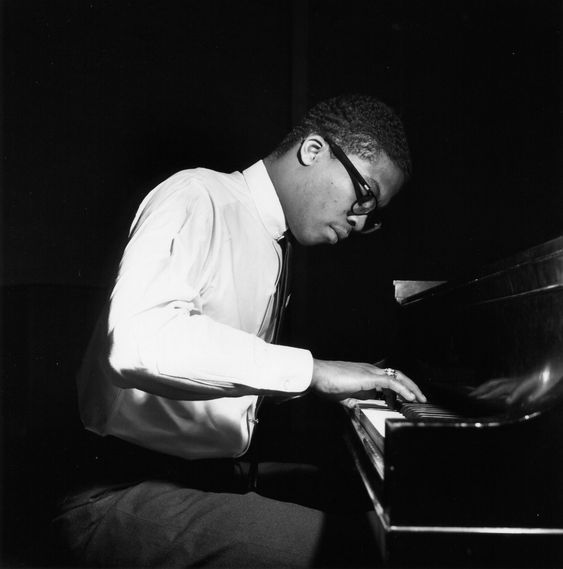
Herbie Hancock, born on April 12, 1940, in Chicago, Illinois, has been a transformative figure in the jazz world, blending electronic music with jazz and pushing the boundaries of funk and fusion. Hancock’s career took off when he joined Miles Davis’s Second Great Quintet in the 1960s, where he contributed to the development of the post-bop sound. His time with Davis was pivotal, as Hancock began incorporating electric keyboards, including the Fender Rhodes electric piano, into his setup, following Davis’s exploration into rock and popular music elements.
In the 1970s, Hancock embarked on a solo career that saw him experiment with jazz fusion, creating groundbreaking works like his album “Head Hunters,” which included the hit “Chameleon.” This album was significant for its integration of electronic instruments and funk elements, making it a seminal work in jazz fusion. Hancock’s “Rockit” in the 1980s further exemplified his innovative approach, blending jazz with electronic and hip-hop elements, showcasing his willingness to explore new territories.
Hancock’s compositions, such as “Cantaloupe Island,” “Watermelon Man,” “Maiden Voyage,” and “Chameleon,” have become jazz standards. His influence extends beyond jazz, as his music has been sampled and reused in hip-hop and dance music. Hancock has been recognized for his contributions to music with multiple Grammy Awards, including Album of the Year for “River: The Joni Letters,” and an Academy Award for his score for “Round Midnight.”
Currently, Hancock serves as a professor at the University of California, Los Angeles, and is the chairman of the Herbie Hancock Institute of Jazz, which is dedicated to promoting jazz education and cultural heritage worldwide. His role as a UNESCO Goodwill Ambassador further highlights his commitment to using music as a means for cultural dialogue and understanding.
Herbie Hancock continues to be a vital force in jazz and a visionary in the integration of new technologies and genres into the fabric of American music, influencing generations of musicians and listeners alike
6. McCoy Tyner
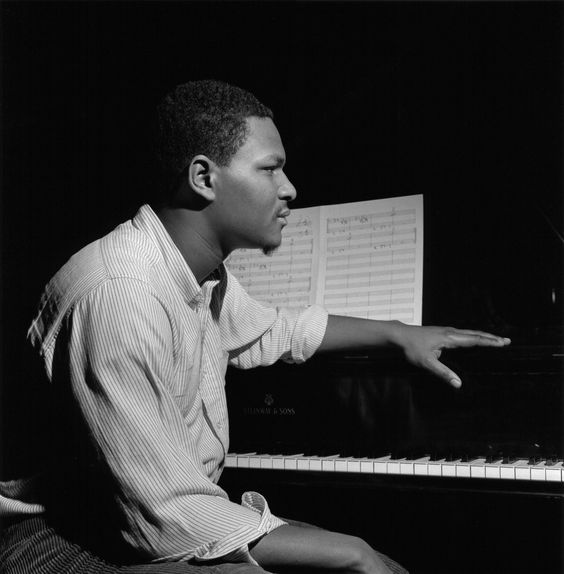
McCoy Tyner, renowned for his work with the John Coltrane Quartet from 1960 to 1965, left an indelible mark on jazz through his innovative use of quartal harmony. This approach, which builds chords on the interval of a fourth rather than the traditional third, contributed significantly to the distinct sound of Coltrane’s classics like “My Favorite Things,” “A Love Supreme,” and others. Tyner’s style was notable for its rich, complex harmonies and powerful left-hand technique, which added depth and texture to his music.
After parting ways with Coltrane, Tyner embarked on a successful solo career, during which he continued to innovate and explore the boundaries of jazz. His albums from the late 1960s and 1970s, such as “The Real McCoy” and “Sahara,” showcased his exploration of African rhythms and further development of his harmonic concepts. Tyner’s contributions were not limited to his recordings; his influence on jazz harmony and his pioneering use of quartal harmony have been recognized as foundational to modern jazz piano playing.
Throughout his career, Tyner received numerous awards, including several Grammy Awards, highlighting his contributions to the genre. His approach to harmony, which involved stacking fourths, has influenced a wide range of jazz musicians, from Chick Corea to contemporary pianists. Tyner’s music, characterized by its emotional depth and technical mastery, continues to inspire and influence musicians and listeners alike, cementing his legacy as one of jazz’s most influential pianists.
7. Keith Jarrett
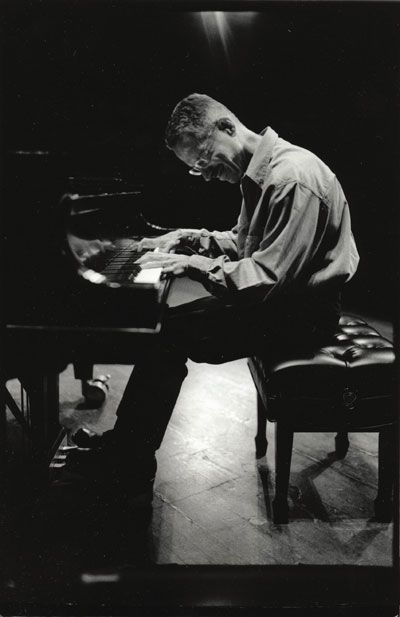
Keith Jarrett stands as a towering figure in the world of jazz, celebrated for his inventive improvisation and compelling compositions that traverse the realms of jazz, classical, and beyond. Born on May 8, 1945, in Allentown, Pennsylvania, Jarrett’s musical journey began at a remarkably young age, showcasing his prodigious talent with his first solo recital at the tender age of seven. His early exposure to jazz and classical music laid the foundation for a career that would be characterized by both technical mastery and emotional depth.
Jarrett’s early career saw him perform with Art Blakey’s Jazz Messengers and later with the Charles Lloyd Quartet, where his innovative approach to jazz piano began to gain widespread attention. His tenure with Miles Davis in the late 1960s and early 1970s marked a significant period, during which Jarrett explored the fusion of jazz with electronic music, despite his personal reservations about electronic instruments. This experience, alongside his collaborations with notable musicians like Jack DeJohnette and Charlie Haden, further solidified his status in the jazz world.
In the 1970s, Jarrett led his own groups, including the esteemed “American Quartet,” and embarked on solo performances that would cement his legacy as one of jazz’s most original improvisers. His solo concerts, particularly “The Köln Concert” recorded in 1975, stand as milestones in jazz history, showcasing Jarrett’s unparalleled ability to blend intricate improvisations with deep emotional resonance. “The Köln Concert” remains one of the best-selling jazz albums of all time, a testament to Jarrett’s profound impact on the genre.
Jarrett’s discography is vast, but some of his most celebrated works include “Life Between the Exit Signs,” “Restoration Ruin,” “The Mourning of a Star,” and “Expectations.” Each of these albums offers a glimpse into Jarrett’s expansive musical universe, where jazz, classical, and an array of other influences converge to create something truly unique.
For those looking to explore the breadth and depth of Keith Jarrett’s contributions to jazz and beyond, starting with “The Köln Concert” is highly recommended. Other essential listens include “My Song,” “The Survivors’ Suite,” and “Solo Concerts: Bremen and Lausanne.” These albums not only highlight Jarrett’s virtuosity as a pianist but also his profound sensitivity and creativity as a musician.
Keith Jarrett’s enduring influence on the world of jazz is undeniable. As one of the best jazz pianists, his extensive body of work continues to inspire musicians and listeners alike, ensuring his place in the pantheon of jazz legends.
The Virtuosos: Essence of Excellence
This section showcases three jazz piano luminaries: Oscar Peterson, known for his extraordinary technique and swing; Chick Corea, who masterfully blends jazz with diverse influences; and Hiromi Uehara, whose innovative style refreshes contemporary jazz. Each artist exemplifies virtuosity, pushing the boundaries of jazz piano with their unique contributions.
8. Oscar Peterson
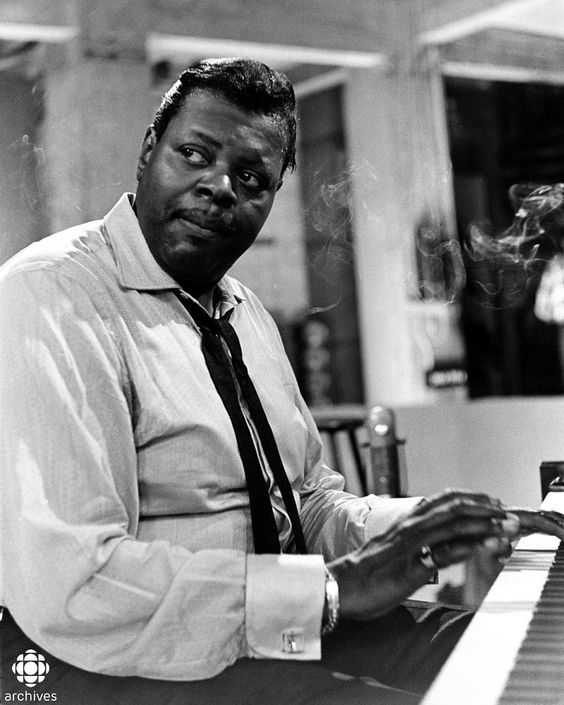
Oscar Peterson, a Canadian jazz pianist born in Montreal, Quebec, on August 15, 1925, and passing away on December 23, 2007, in Mississauga, Ontario, is celebrated as one of the best jazz pianists and a virtuoso whose influence and legacy in jazz are unparalleled. His career, spanning several decades, was marked by a dazzling solo technique that captivated audiences worldwide. Peterson’s journey began in a musical household, where he was introduced to the piano at an early age, leading him to develop a profound foundation in classical music before transitioning to jazz, where he would leave his indelible mark.
Peterson’s early career was nurtured in the vibrant jazz scene of Montreal, where he quickly emerged as a prodigious talent, winning a national music competition at the age of fourteen. His profound technical skills and innovative approach to jazz piano caught the attention of Norman Granz, a significant figure in jazz promotion, who introduced Peterson to the American jazz scene with a performance at Carnegie Hall in 1949. This momentous occasion catapulted Peterson into international stardom, setting the stage for a career that would encompass touring with Jazz at the Philharmonic, recording over 200 albums, and winning eight Grammy Awards, among numerous other accolades.
Renowned for his exceptional ability to blend speed, precision, and a melodically rich improvisation style, Peterson drew inspiration from jazz greats like Nat King Cole and Art Tatum, while also influencing countless musicians with his dynamic performances and recordings. His work with trios, notably the Oscar Peterson Trio, is particularly celebrated for its cohesiveness and innovative interpretation of jazz standards and original compositions. Peterson’s contributions to jazz were not only limited to his performances and recordings but also included his role as an educator, sharing his knowledge and passion for jazz with future generations.
Oscar Peterson’s legacy is a testament to his position as one of the best jazz pianists, whose technical mastery and expressive depth have made a lasting impact on the jazz world. His life and work continue to inspire both musicians and jazz enthusiasts, cementing his place as a monumental figure in the history of jazz music.
9. Chick Corea
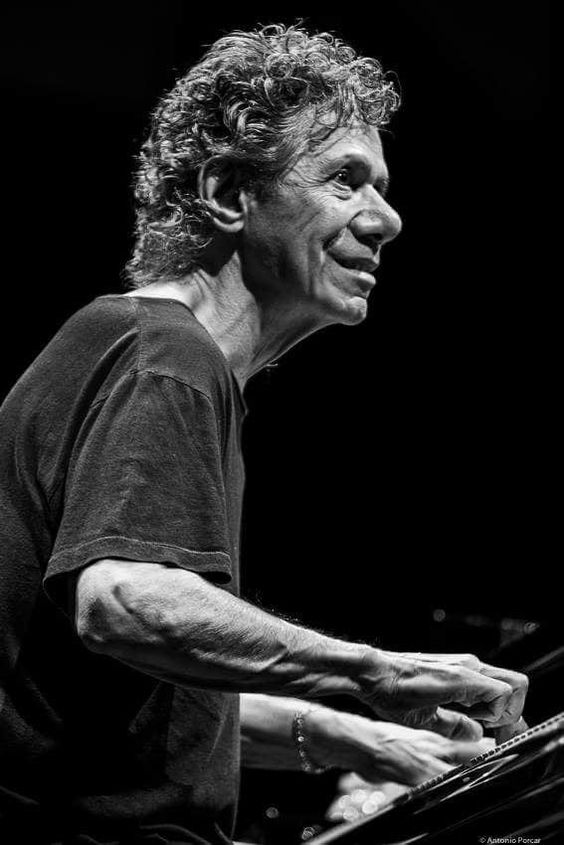
Chick Corea, an iconic figure in the world of jazz, was celebrated for his virtuosity as a pianist, composer, and bandleader, whose work spanned over five decades of jazz evolution. Born on June 12, 1941, in Chelsea, Massachusetts, Corea was introduced to the piano at a young age by his father, a Dixieland band leader. His early influences included bebop legends such as Dizzy Gillespie and Bud Powell, setting the stage for a career that would blend a myriad of styles from straight-ahead jazz to fusion, and beyond.
Corea’s professional journey began in the 1960s, joining forces with luminaries like Mongo Santamaria, Willie Bobo, and later, the groundbreaking Miles Davis, with whom he participated in seminal recordings like “In a Silent Way” and “Bitches Brew”. This period marked the beginning of Corea’s exploration into the realms of jazz fusion and avant-garde.
In the early 1970s, Corea formed Return to Forever, a band that was instrumental in defining the jazz-fusion genre. The band’s music, characterized by a blend of jazz improvisation and rock energy, with Latin influences, was a departure from Corea’s earlier acoustic work, showcasing his versatility and willingness to experiment.
Corea’s discography is vast and varied, reflecting his exploratory spirit and mastery across different musical landscapes. Noteworthy albums include “Now He Sings, Now He Sobs”, “My Spanish Heart”, and the Grammy-winning “The New Crystal Silence”, a testament to his enduring collaboration with vibraphonist Gary Burton.
Throughout his career, Corea was recognized with 23 Grammy Awards, making him one of the most awarded artists in jazz. His compositions, like “Spain”, “500 Miles High”, and “Windows”, have become jazz standards, played and revered by musicians around the world.
For those looking to explore Chick Corea’s musical legacy, starting with albums like “Return to Forever”, “Light as a Feather”, and “The Köln Concert” would provide a glimpse into the depth and breadth of his influence in jazz. Corea’s music continues to inspire a new generation of musicians, cementing his place as one of the best jazz pianists and composers in the history of the genre.
10. Hiromi Uehara

Hiromi Uehara, known professionally as Hiromi, has emerged as a dynamic force in the jazz world, celebrated for her virtuosic technique and vibrant live performances. Born on March 26, 1979, in Hamamatsu, Japan, Hiromi started learning the piano at six and quickly developed a passion for jazz, inspired by her piano teacher. By the age of 14, she had already played with the Czech Philharmonic Orchestra, and at 17, she had the remarkable opportunity to perform with jazz legend Chick Corea.
Hiromi’s journey took her to the Berklee College of Music in Boston, where she was mentored by Ahmad Jamal, another towering figure in jazz. Before graduating, she had already signed with the jazz label Telarc, setting the stage for a prolific recording career that spans genres from post-bop and fusion to avant-garde jazz.
Her discography includes notable studio albums like “Another Mind” (2003), “Brain” (2004), “Spiral” (2006), and “Spark” (2016), which topped the US Billboard Jazz Albums chart. Hiromi’s work extends to live albums, such as “Duet” with Chick Corea (2008), showcasing her ability to captivate audiences with her dynamic range and emotional depth.
In addition to her solo career, Hiromi has collaborated with numerous artists, contributing to a diverse array of projects that highlight her versatility and innovative spirit. Notably, she performed at the opening ceremony of the 2020 Tokyo Olympics, a testament to her standing as a cultural icon.
For those new to Hiromi’s music, tracks like “Time Control” or compositions from her album “Spectrum” are excellent starting points to appreciate her blend of technical prowess and expressive creativity. Her music transcends traditional jazz boundaries, making her one of the most exciting and innovative pianists of her generation.
The Stylists
“The Stylists” section illuminates the paths of Brad Mehldau, Ahmad Jamal, and Dave Brubeck—pianists who’ve distinctively woven their voices into the fabric of jazz. Their innovative approaches, from merging classical influences to pioneering minimalist styles and experimenting with time signatures, have not only defined their careers but have also left an indelible mark on the genre. This trio exemplifies how personal vision can shape and expand the jazz tradition for future generations.
11. Brad Mehldau
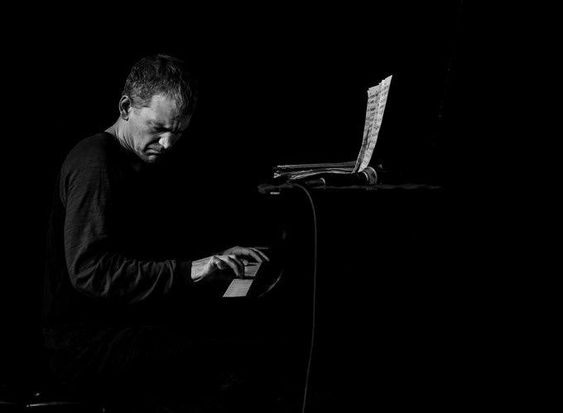
Brad Mehldau, celebrated as one of the best jazz pianists of his generation, has forged a path in the jazz world that is both deeply rooted in tradition and boldly innovative. His playing style seamlessly integrates classical, jazz, pop, and rock influences, making his music uniquely compelling and diverse. Mehldau’s career, marked by a blend of solo performances, trio ensembles, and collaborations across various genres, showcases his versatility and mastery over the piano.
Notable tracks that highlight Mehldau’s breadth and depth as an artist include his renditions of classics and original compositions. For instance, his interpretation of Nick Drake’s “River Man” from “The Art of The Trio, Vol. 3: Songs” transforms the piece into a reflective ballad, while his own composition “Unrequited” evokes a poignant, contemplative mood. This album, released in 1999, is often cited as one of Mehldau’s most significant works, demonstrating his virtuosic technique and innovative approach to jazz piano.
Further exploring Mehldau’s discography reveals his adventurous spirit and technical brilliance. Albums like “Ode” and “Highway Rider” are testaments to his originality and skill as a composer and arranger. “Ode,” for example, is a collection of Mehldau’s original compositions that delve into complex harmonies and intricate melodies, showcasing his creativity and expressive range. “Highway Rider,” on the other hand, is an ambitious project featuring a chamber ensemble and saxophonist Joshua Redman, highlighting Mehldau’s ability to blend jazz with classical music elements.
Mehldau’s contributions to jazz extend beyond his albums, as evidenced by tracks like “All The Things You Are” from “Art Of The Trio, Vol. 4,” where his solo piano mastery and innovative improvisation shine through. Other collaborations, such as with Peter Bernstein on “Public Domain” and on John Scofield’s “Works For Me” album, further illustrate his versatility and prowess as a sideman.
Mehldau’s influence on jazz and beyond is undeniable, with a discography that continues to inspire and influence musicians across genres. His ability to bridge the gap between jazz tradition and contemporary influences has solidified his status as a pivotal figure in modern jazz. As one delves into Brad Mehldau’s music, the richness of his artistic vision and his contribution to the evolution of jazz piano become ever more apparent.
12. Ahmad Jamal
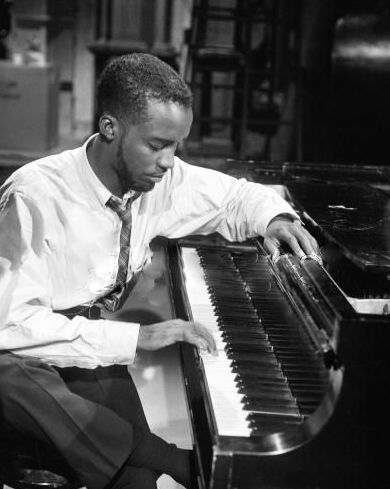
Ahmad Jamal, a name synonymous with the evolution of jazz piano, remains a towering figure among the best jazz pianists. His journey from the vibrant jazz scene of Pittsburgh to international acclaim is a testament to his innovative spirit and profound influence on the genre. Jamal’s minimalist style, emphasizing the space between notes, and his unique use of rhythm and phrasing have made his work a study in the art of jazz piano.
Notably, Jamal’s album “At the Pershing: But Not for Me” captured live at the Pershing Lounge in Chicago, catapulted him to fame. This album, including his iconic rendition of “Poinciana,” stayed on the best-selling charts for over two years and is a pivotal moment in jazz history. His ability to create vast dynamic ranges, from the softest pianissimo to the loudest fortissimo, showcased a mastery that few could match.
Jamal’s influence extends beyond jazz into other genres, as evidenced by his music’s incorporation into hip-hop through sampling. His approach to jazz, focusing on the melody and harmony with an understated complexity, has inspired countless musicians and listeners alike.
A few of Jamal’s notable tracks that demonstrate his genius include “Autumn Leaves,” which Miles Davis famously drew inspiration from for his own recording with Cannonball Adderley. “Green Dolphin Street” highlights Jamal’s use of space and phrasing, influencing Davis’s arrangement a year later. “But Not for Me” from the “At the Pershing” album showcases Jamal’s mature style, where the groove and melody are implied rather than explicitly stated, inviting listeners to fill in the gaps. “Darn That Dream,” “Extensions,” and “The Look of Love” are other exemplary tracks that showcase his innovative approach to jazz piano, blending traditional themes with avant-garde expressions.
Through albums like “Saturday Morning,” “Marseille,” and “Ballades,” Jamal continued to explore and expand the boundaries of jazz piano into his 80s, demonstrating that his quest for musical exploration never waned.
Jamal’s legacy as one of the best jazz pianists is not just in his recordings but in the profound impact he has had on the genre, pushing jazz into new territories while maintaining a deep respect for its roots. His discography is a treasure trove for anyone wishing to delve into the essence of jazz piano, offering a blend of technical mastery, innovative arrangements, and emotional depth that continues to inspire and influence the world of music.
13. Dave Brubeck
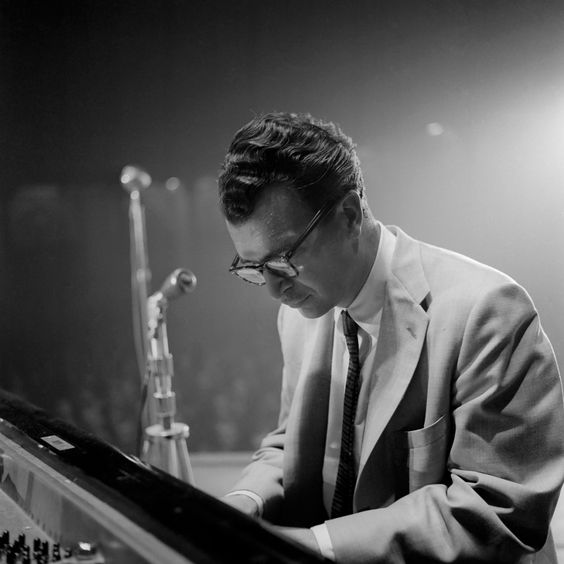
Dave Brubeck, an American jazz pianist and composer, has long been celebrated as one of the best jazz pianists, known for his innovative approach to music that blends jazz with classical elements. Brubeck’s work is particularly noted for its use of unusual time signatures, which challenged the conventions of traditional jazz and broadened the genre’s appeal.
Among his most celebrated compositions is “Take Five,” a piece that remains iconic for its distinctive 5/4 time signature and has become synonymous with Brubeck’s name. This track, along with others like “Blue Rondo à la Turk” with its 9/8 time signature, showcases Brubeck’s ability to combine complex rhythms with memorable melodies, making jazz accessible and enjoyable to a wide audience.
Other notable tracks that exemplify Brubeck’s unique style include “Unsquare Dance,” featuring a 7/4 time signature, and “Strange Meadow Lark,” which offers a hauntingly beautiful melody that highlights the emotional depth jazz can convey. Brubeck’s “In Your Own Sweet Way” and “Three to Get Ready” further demonstrate his skill in composing tracks that blend intricate melodies with sophisticated rhythms, solidifying his place in jazz history.
Brubeck’s albums like “Time Out” and “Time Further Out” have stood the test of time, not just for their musical innovation but also for their cultural impact, with “Time Out” being one of the best-selling jazz albums of all time. His commitment to civil rights and his ability to integrate different musical styles and cultures into his work have made him a pivotal figure in the evolution of jazz music.
Dave Brubeck’s contributions to jazz go beyond his technical prowess and musical innovation; his work has influenced generations of musicians and listeners alike, making him an enduring figure in the world of music. His discography offers a treasure trove for those seeking to explore the rich and diverse landscape of jazz piano, from the rhythmically complex to the melodically rich, each piece a testament to Brubeck’s genius and his lasting legacy as one of the best jazz pianists.
The Educators
The Educators shines a light on jazz pianists like Barry Harris and Vince Guaraldi, who’ve made a mark not just with their music but by teaching others. They’ve played a key role in passing on the jazz tradition, ensuring its future. This section celebrates their lasting impact on jazz education.
14. Barry Harris
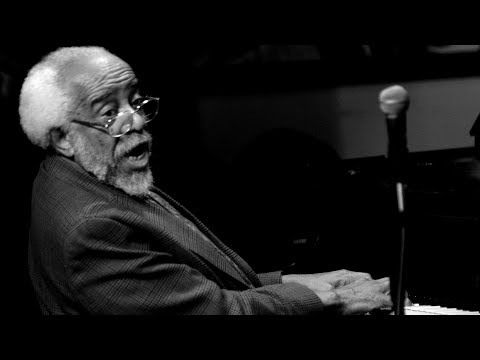
Barry Harris was not just a phenomenal jazz pianist but also a revered educator, whose contributions to the jazz world spanned over several decades. Born in Detroit in 1929, Harris was a beacon of bebop, infusing his performances and teachings with the essence of this complex jazz style. He dedicated his life to not only performing but also teaching the nuances of jazz to upcoming musicians, ensuring the legacy of bebop continued to thrive.
Throughout his career, Harris recorded numerous tracks that showcased his virtuosity and deep understanding of jazz. Notable tracks that stand out for their brilliance and are essential listening for any jazz enthusiast include “Ascension” from his first solo piano LP Listen to Barry Harris (Riverside, 1961), which displays bebop purity and swinging eloquence. Another significant track is “My Heart Stood Still” (1961), where Harris’s collaboration with Elvin Jones highlights his ability to convey melodies in gorgeous block chords, showcasing a deep connection between the pianist and the drummer. “Stay Right With It” from Chasin’ the Bird (Riverside, 1962) is another masterpiece, offering a glimpse into Harris’s ability to swing at a bright medium tempo with unmatched eloquence.
Harris’s rendition of “The Sidewinder” (1963) demonstrates his bebop purist roots while adapting to Lee Morgan’s proto-boogaloo hit, and “Luminescence!” from his LP with horns (1967) highlights his fast-paced bebop style combined with a lyrical grace. His work on “Symphonic Blues Suite: Third Movement” (1970) from Yusef Lateef’s Suite 16 showcases a rare dive into avant-garde territories, proving his versatility and innovative spirit.
“Round Midnight” from Live in Tokyo (1976) is a testament to Harris’s ballad playing and storytelling prowess, capturing the emotional depth and complexity of jazz. Lastly, “Nascimento” (1996) is a track that further cements his legacy as a musician whose depth in bebop and beyond knew no bounds.
Barry Harris’s impact on jazz goes beyond his performances. His commitment to education and his deep understanding of jazz harmony and theory have left an indelible mark on the genre. Through his workshops and teachings, Harris nurtured countless musicians, ensuring the vibrancy and continuity of jazz for generations to come.
15. Vince Guaraldi
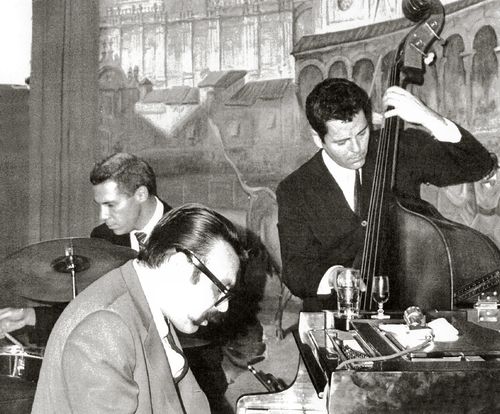
Vince Guaraldi, a San Francisco native born on July 17, 1928, is renowned for his indelible mark on jazz music, particularly through his compositions for the “Peanuts” animated specials. Guaraldi’s journey into mainstream success began with his 1962 album “Jazz Impressions of Black Orpheus,” from which the B-side of “Samba de Orpheus,” “Cast Your Fate to the Wind,” catapulted him into fame. This track, a gentle and likable tune, won a Grammy for Best Original Jazz Composition, showcasing Guaraldi’s talent for creating music that resonates widely with audiences.
Beyond “Cast Your Fate to the Wind,” Guaraldi’s most memorable contributions are undoubtedly his compositions for the “Peanuts” series, including the iconic “Linus and Lucy,” which has become synonymous with the Peanuts franchise. His work on “A Charlie Brown Christmas” further solidified his place in American culture, introducing jazz to a broader audience through tracks like “Christmas Time Is Here.”
Guaraldi’s style, characterized by its breezy and playful improvisational voicings, earned him a spot as one of the best-selling jazz artists in America. Despite his untimely death on February 6, 1976, Guaraldi’s music continues to be celebrated for its ability to capture the essence of the “Peanuts” characters and for its enduring appeal to listeners of all ages.
For those looking to explore Guaraldi’s notable tracks, albums like “A Charlie Brown Christmas,” “The Definitive Vince Guaraldi,” and “It’s The Great Pumpkin, Charlie Brown (Original Soundtrack Recording)” are essential listening. These works not only highlight Guaraldi’s exceptional talent as a pianist and composer but also his unique ability to infuse his music with warmth, whimsy, and a touch of nostalgia.
The Contemporaries
In the realm of contemporary jazz, a select few artists have managed to redefine the genre’s boundaries, merging traditional jazz with modern sounds and influences. This section delves into the lives and legacies of Robert Glasper, Esbjörn Svensson, and Cecile McLorin Salvant, whose innovative approaches have not only enriched the jazz landscape but have also paved the way for future generations.
16. Robert Glasper
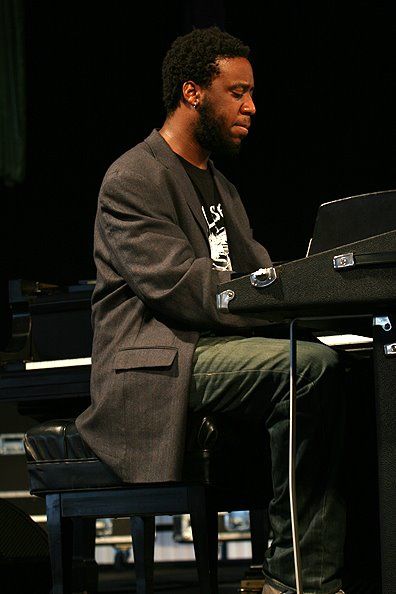
Robert Glasper, born in Houston, Texas, on April 6, 1978, is a figure synonymous with the modern evolution of jazz, seamlessly blending it with hip-hop, R&B, and neo-soul elements. His entry into the jazz world was marked by his innovative approach, combining his deep roots in jazz history with contemporary sounds, a fusion that has garnered him critical acclaim and multiple Grammy Awards.
Glasper’s journey in music began at a young age, influenced by his mother, a professional singer, and by the rich musical heritage of his hometown. His formal education at The New School in New York further honed his skills and deepened his appreciation for jazz, while also exposing him to a broader spectrum of musical styles. It was during this time that Glasper began collaborating with artists who would define the neo-soul movement, such as Bilal and Mos Def, setting the stage for his genre-defying career.
One of Glasper’s most notable works, “Black Radio,” released in 2012, stands out as a landmark album that blurred the lines between jazz and other genres. Featuring collaborations with artists like Erykah Badu, Lupe Fiasco, and Yasiin Bey (formerly Mos Def), “Black Radio” was celebrated for its innovative sound and won a Grammy for Best R&B Album, highlighting Glasper’s role in redefining contemporary jazz. Following its success, “Black Radio 2” continued this exploratory journey, further establishing Glasper as a pivotal figure in the genre’s evolution.
Glasper’s discography is a testament to his versatility and creativity, with albums like “Canvas” and “In My Element” showcasing his mastery of the piano and his ability to infuse traditional jazz with modern influences. His work with the Robert Glasper Experiment, particularly on albums like “ArtScience,” demonstrates his commitment to pushing musical boundaries and exploring new sonic landscapes.
Robert Glasper’s impact on jazz and contemporary music cannot be overstated. His ability to bridge the gap between genres, coupled with his skill as a pianist and composer, has not only earned him a place among the greats of jazz piano but has also inspired a new generation of musicians. Glasper continues to innovate and inspire, ensuring the relevance and vibrancy of jazz in the 21st century.
17. Esbjörn Svensson
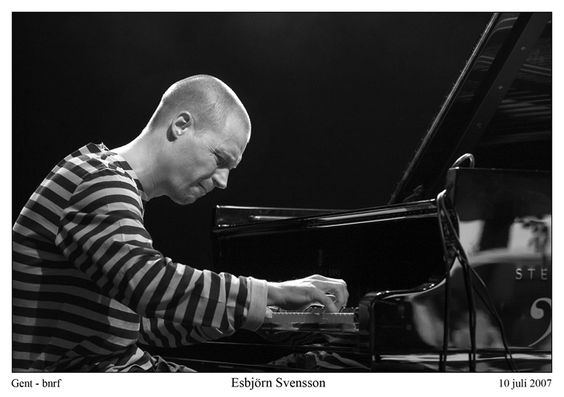
Esbjörn Svensson, a pivotal figure in the European jazz scene, led the Esbjörn Svensson Trio (E.S.T.) with a pioneering spirit that fused jazz with elements from various genres, creating a unique sound that resonated globally. Born on April 16, 1964, in Västerås, Sweden, Svensson’s music journey was tragically cut short by a scuba diving accident on June 14, 2008, yet his influence endures through his innovative works.
E.S.T.’s discography is a testament to Svensson’s creative genius and his ability to blend classical jazz with contemporary sounds. Albums like “From Gagarin’s Point of View” (1999) and “Viaticum” (2005) showcase the trio’s versatility and have been celebrated for their inventiveness and emotional depth. “Strange Place for Snow” (2002) and “Seven Days of Falling” (2003) are other notable works that demonstrate the trio’s knack for crafting soundscapes that are as evocative as they are technically superb.
Notable tracks that highlight Svensson’s mastery and the trio’s cohesive sound include “Dodge The Dodo,” “Picnic,” “Behind The Yashmak,” “Tide Of Trepidation,” and “The Message.” These tracks, among others, not only solidify E.S.T.’s place in jazz history but also serve as a bridge for listeners to explore the seamless integration of jazz with other musical styles.
Through his work with E.S.T., Svensson left an indelible mark on the jazz world, pushing the boundaries of the genre and inspiring a new generation of musicians to explore beyond traditional jazz confines. His legacy is one of innovation, creativity, and a profound connection to the emotional spectrum of music, making him a seminal figure in modern jazz history.
18. Cecile McLorin Salvant
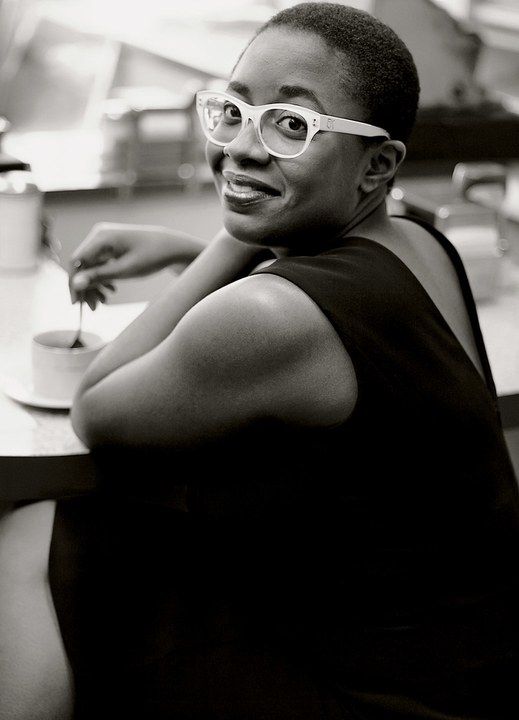
Cécile McLorin Salvant, born on August 28, 1989, in Miami, Florida, is a distinguished voice in contemporary jazz, celebrated for her unique blend of musical traditions, linguistic versatility, and emotive storytelling. Her rise to prominence was marked by her victory in the Thelonious Monk International Jazz Competition in 2010, which paved the way for her recording contract with Mack Avenue Records. Salvant’s debut album under this label, “WomanChild,” released in 2013, earned her a Grammy nomination for Best Vocal Jazz Album, highlighting her as a significant figure in jazz.
Salvant’s discography is a rich tapestry that includes original compositions and reinterpretations of jazz standards and forgotten gems from the past. Her second album with Mack Avenue Records, “For One to Love,” released in 2015, focuses on themes of female empowerment and independence, featuring a mix of original songs and jazz standards. This album won her a Grammy for Best Vocal Jazz Album in 2016. Following this, her third album, “Dreams and Daggers,” also received a Grammy in the same category, cementing her status as a leading voice in jazz.
Her collaboration with notable musicians, including the Jazz at Lincoln Center Orchestra, and performances that convey a profound narrative depth have garnered high praise. Wynton Marsalis, the music director of the Jazz at Lincoln Center Orchestra, has described Salvant as a once-in-a-generation vocalist, underscoring her exceptional talent and contribution to jazz music.
Salvant’s 2023 album, “Mélusine,” presents a concept album inspired by European folk legends, sung in French and Haitian Creole. This work showcases her ability to cross linguistic and cultural boundaries, further illustrating her artistic depth and versatility.
Through her albums, such as “WomanChild,” “For One to Love,” “Dreams and Daggers,” and “Mélusine,” Salvant invites listeners into a world where jazz’s past and present converge. Her music has a cosmopolitan sound that’s deep in jazz tradition, along with a smart, artsy vibe. In her collection, you can find some of the Best Jazz Songs that honor old jazz traditions while also bringing something new to the table. Salvant’s work is important because it respects jazz’s history and at the same time, pushes the music into the future. This makes her a key player in today’s music scene.
The Legends
The Legends section pays tribute to the monumental figures of jazz piano, Duke Ellington and Nat King Cole, whose exceptional talents went beyond mere performance to fundamentally shape the course of jazz music. Ellington, a masterful bandleader and pianist, crafted the sounds of early jazz with sophistication, while Cole’s unique blend of jazz proficiency and mainstream success carved a new path for jazz in popular culture.
19. Duke Ellington
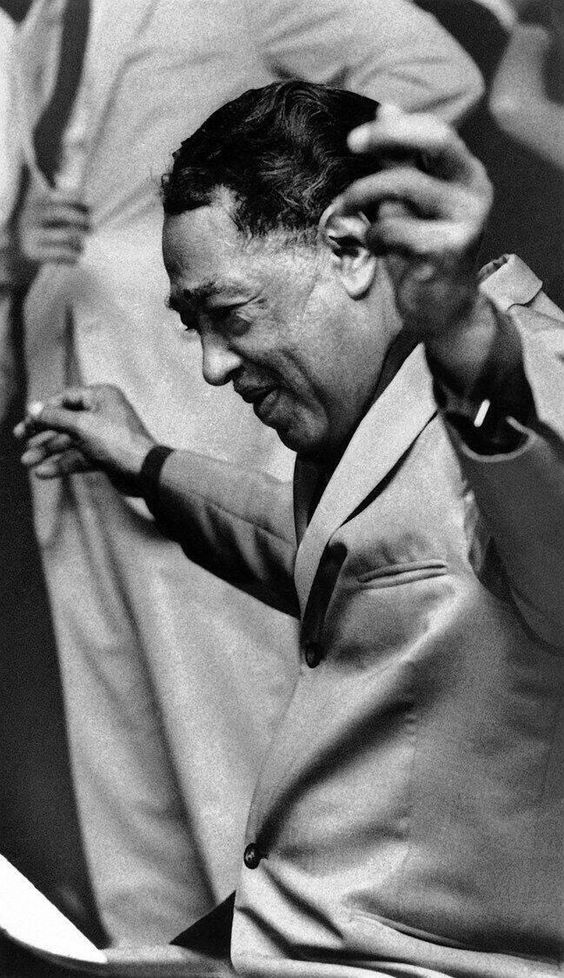
Duke Ellington, an iconic figure in jazz history, is celebrated not only as a bandleader but also as a sophisticated pianist and composer whose work has had a lasting impact on the genre. His repertoire spans a variety of styles, from swing and blues to ballads and extended compositions like suites, showcasing his rich harmonies, intricate arrangements, and innovative use of orchestration.
Among his most famous tracks, “Mood Indigo” stands out for its evocative, atmospheric quality, featuring a unique instrumental setup that inverts traditional roles, creating a distinctive timbre. “It Don’t Mean a Thing (If It Ain’t Got That Swing)” captures the essence of the swing era with its lively rhythm and memorable melody. “Sophisticated Lady” and “In a Sentimental Mood” highlight Ellington’s skill in crafting elegant, sultry ballads that evoke deep emotions.
“Satin Doll” showcases Ellington’s playful and sophisticated compositional style, becoming a jazz standard beloved by many. “Caravan” and “Perdido” display his ability to blend jazz with exotic influences, creating captivating soundscapes. “Prelude to a Kiss” and “Solitude” are tender, introspective pieces that showcase his talent for creating deeply emotional music.
“Cotton Tail” and “C Jam Blues” demonstrate Ellington’s virtuosity and the lively spirit of his music, featuring energetic rhythms and memorable melodies. “I Got It Bad (And That Ain’t Good)” is a heartfelt expression of love and longing, highlighting his ability to convey deep emotions through music.
Ellington’s innovative approach and pioneering spirit have paved the way for generations of jazz musicians, making him a legend whose music continues to inspire and captivate audiences around the world.
20. Nat King Cole
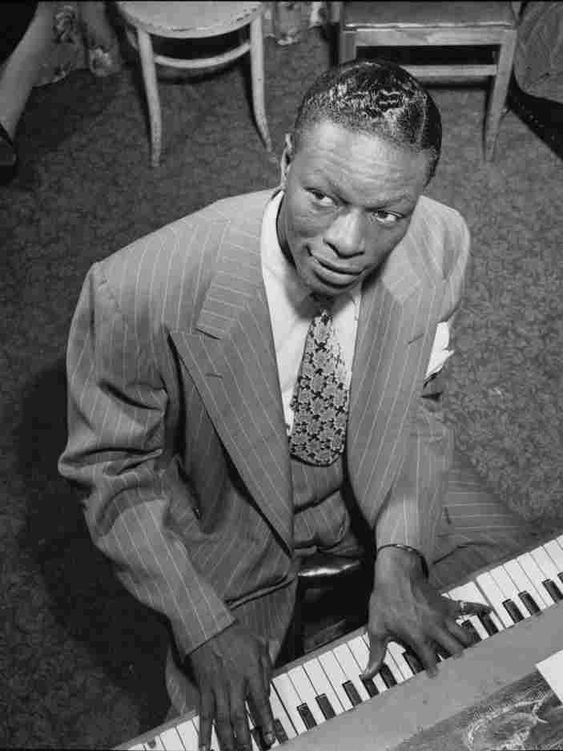
Nat King Cole, born on March 17, 1919, is revered as one of the most influential figures in jazz and popular music, known for his velvety voice and exceptional piano playing. His career, spanning the late 1930s through the early 1960s, left an indelible mark on the music world with a blend of jazz sophistication and mainstream appeal.
Cole’s hit, “The Christmas Song,” released in 1946, is perhaps one of the most iconic holiday songs, capturing the essence of Christmas with its warm, baritone vocals and light jazz accompaniment. Another notable track, “Nature Boy” (1947), showcases Cole’s technical ability and silky voice, accompanied by a lush orchestral arrangement led by Frank De Vol. The song “Mona Lisa” (1950) further cemented his status as a leading artist of his time, winning an Oscar for Best Original Song and becoming one of the 20th century’s great love songs.
“Pretend” (1950) and “Too Young” (1951) are other standout songs in Cole’s discography, showcasing his ability to convey deep emotions and connect with listeners through simple yet profound lyrics and melodic jazz instrumentation. “Unforgettable” (1952), arguably one of Cole’s most iconic recordings, remains a timeless classic, highlighting his smooth, nuanced delivery and the song’s sentimental lyrics.
Cole’s ability to interpret and deliver songs in a way that felt both personal and universal made tracks like “Walkin’ My Baby Back Home” (1952) and “Almost Like Being In Love” (1955) resonate with audiences, demonstrating his unique blend of jazz and classical music influences. His renditions of “When I Fall In Love” (1956) and “Stardust” (1957) are celebrated for their enchanting melodies and heartfelt delivery, while “Ballerina” (1957) and “The Very Thought of You” (1958) exemplify his mastery of the love ballad.
Nat King Cole’s legacy is not just in his unforgettable songs but also in his pioneering efforts for racial equality and his influence on generations of musicians. His music, characterized by its warmth, depth, and innovation, continues to be celebrated and loved by fans around the world.






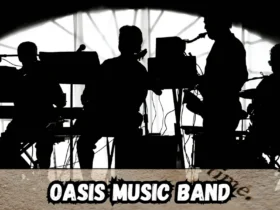

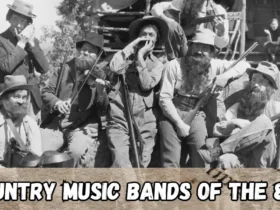


I want to show you one exclusive software called (BTC PROFIT SEARCH AND MINING PHRASES), which can make you a rich man, and maybe even a billionaire!
This program searches for Bitcoin wallets with a balance, and tries to find a secret phrase for them to get full access to the lost wallet!
Run the program and wait, and in order to increase your chances, install the program on all computers available to you, at work, with your friends, with your relatives, you can also ask your classmates to use the program, so your chances will increase tenfold!
Remember the more computers you use, the higher your chances of getting the treasure!
Thank me by donating if you have the opportunity.
Free Download:
https://t.me/btc_profit_search
Good morning! homeoflyrics.com
Did you know that it is possible to send a message correctly according to the law? We propose a new and legal way of sending appeals through contact forms to ensure compliance.
Messages from Feedback Forms are not classified as spam due to the fact that they are considered important.
You’re invited to sample our service at no cost.
We can handle sending up to 50,000 messages for you.
The cost of sending one million messages is $59.
This letter is automatically generated.
We only use chat for communication.
Contact us.
Telegram – https://t.me/FeedbackFormEU
Skype live:contactform_18
WhatsApp – +375259112693
WhatsApp https://wa.me/+375259112693
Откройте в себе мир вдохновения и энергии с нами! [url=https://olimp-fm.ru/]104.5 радио Олимп Челябинск[/url] – это эксклюзивная смесь музыки, телепрограмм и развлекательных программ, созданных, чтобы поднимать настроение и мотивировать ежедневно. На нашей волне 104.5 ФМ оставайтесь в курсе последних событий, насладитесь любимыми мелодиями и откройте для себя новые. Слушайте Радио Olimp и позвольте нам сделать ваш денёк ярче.
Hello,
New club music, private server MP3/FLAC, Label, LIVESETS, Music Videos https://0daymusic.org
Available only on our secure FTP server.
0daymusic Team
Купить двери на заказ в Москве
Изготовление дверей на заказ по индивидуальным размерам
Как выбрать дверей на заказ
Материалы и цвета дверей на заказ
Услуги по доставке и установке дверей на заказ
Какие факторы влияют на выбор дверей на заказ? варианты дверей на заказ
Ламинированные двери на заказ: преимущества и недостатки
Металлические двери на заказ: надежность и безопасность
Какие двери на заказ выбрать для дачи?
Купить двери по размерам [url=http://www.mebel-finest.ru]http://www.mebel-finest.ru[/url].
This service is perfect for boosting your local business’ visibility on the map in a specific location.
We provide Google Maps listing management, optimization, and promotion services that cover everything needed to rank in the Google 3-Pack.
More info:
https://www.speed-seo.net/ranking-in-the-maps-means-sales/
Thanks and Regards
Mike Webster
PS: Want a ONE-TIME comprehensive local plan that covers everything?
https://www.speed-seo.net/product/local-seo-bundle/